Encyclopaedia Index
TITLE : EXPLOSION IN A BAFFLED ENCLOSURE
BY: D J FREEMAN - CHAM Development Team
PHOENICS VERSION: 2.1
DATE: SEPTEMBER 1995
DETAILS :
- A methane explosion in a vented enclosure 1.2m long is
simulated. There are 5 pairs of baffles equally spaced
along the length of the enclosure, generating turbulence.
- The simulation is two-dimensional and the LVEL turbulence
model is used in conjunction with the Multi-Fluid Turbulent
Combustion model (see next page).
- Some preliminary simulations involved simulation of only
the first baffle.
The Multi-Fluid Turbulent Combustion (MFTC) Model:
- The MFTC has been developed within CHAM to simulate the complex
combusting flows associated with explosions and flames more
accurately.
- In this example the reacting mixture consists of four fragments,
of different (and fixed) composition and temperature (see next
page). Mixing of the hot and cold fragments creates the
intermediate fragments, with the hottest being hot enough to
react (i.e. burn) to form hot products.
- The rate of combustion is therefore controlled not only by the
rate of mixing (as in the Eddy-break-up model) but also by the
kinetic rate of reaction.
- The MFTC may be extended to any number of fluids, depending on
the requirements of the simulation.
The Multi-Fluid Turbulent Combustion Model (cont.)
The four fluids used in this simulation were:
A, comprising of fully unburned fuel/air mixture,
B, a mixture of unburned gas and products at a temperature too
low for chemical combustion to proceed,
C, the same mixture but at a temperature at which the
chemical rate is significant, and
D, fully burned gas.
A and D mix to form B and C, while A mixes with C and B with D
to form B and C respectively. C reacts to form D.
The overall rate of combustion therefore depends on the mixing
rate and the rate of reaction.
The effect of changing the mixing rate constants was investigated
in this work.
Pictures are as follows:
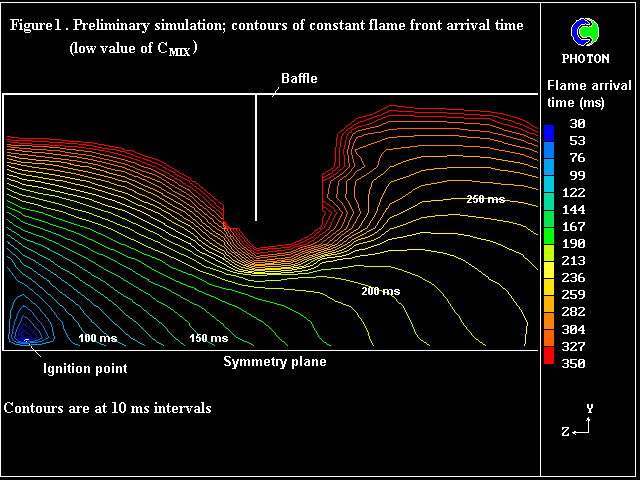
1. Contours of constant flame front arrival time (low value of CMIX)
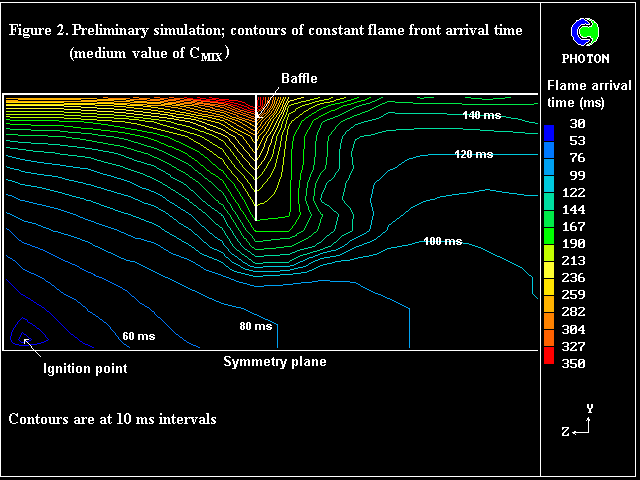
2. Contours of constant flame front arrival time (medium value of CMIX)
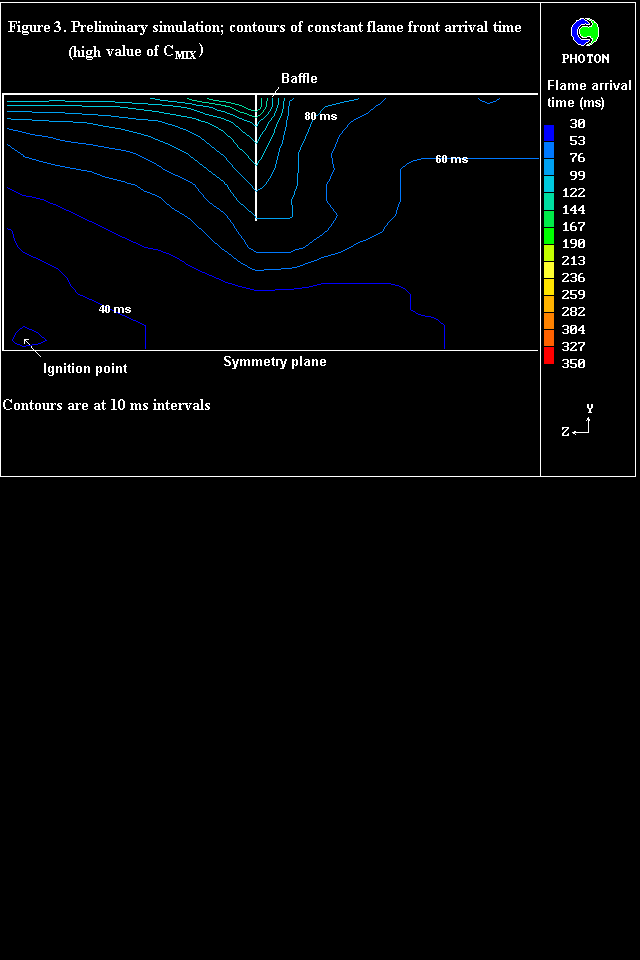
3. Contours of constant flame front arrival time (high value of CMIX)
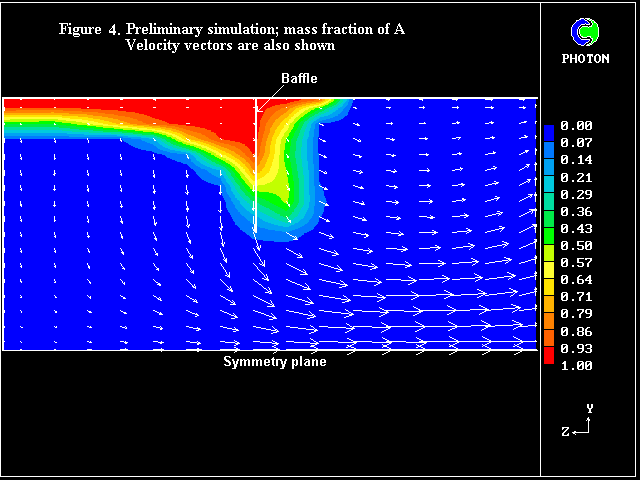
4. Preliminary simulation: Concentration contours of A
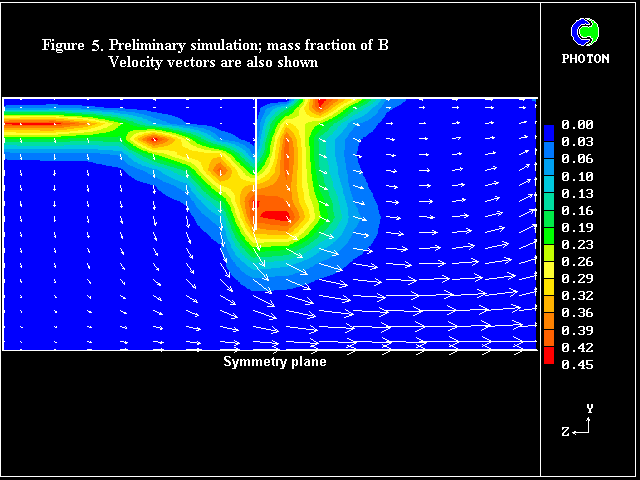
5. Preliminary simulation: Concentration contours of B
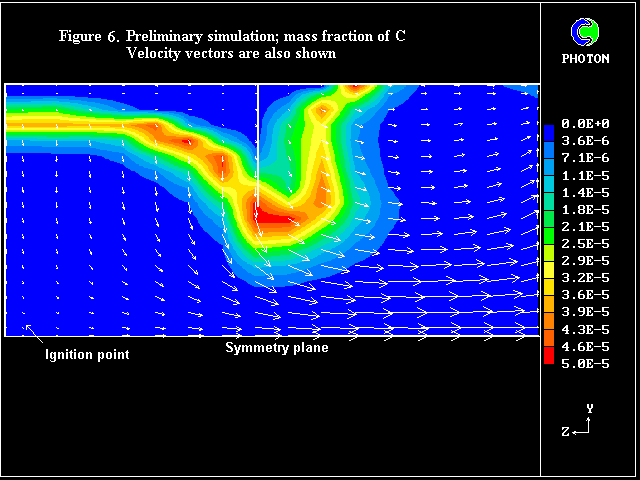
6. Preliminary simulation: Concentration contours of C
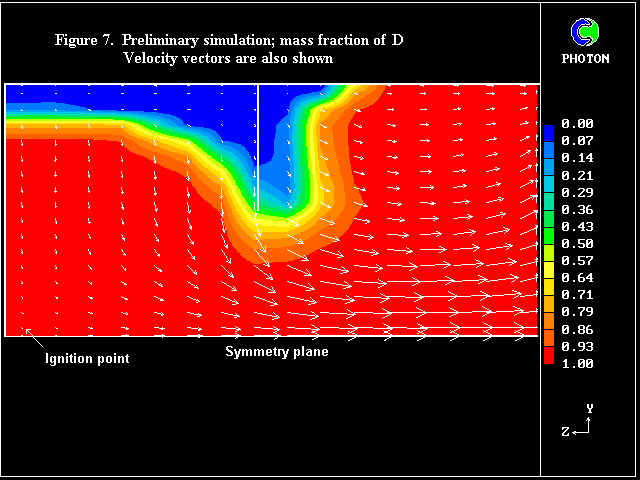
7. Preliminary simulation: Concentration contours of D
8. Full simulation: Concentration contours of D (products)showing the
development of the flame front with time:
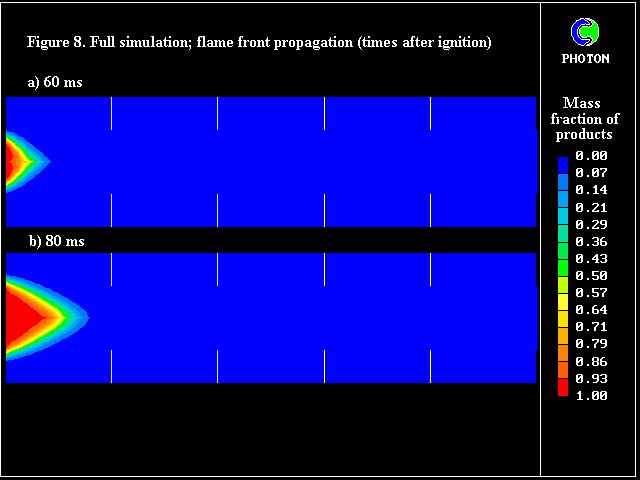
at 60 and 80 microseconds

at 100 and 120 microseconds
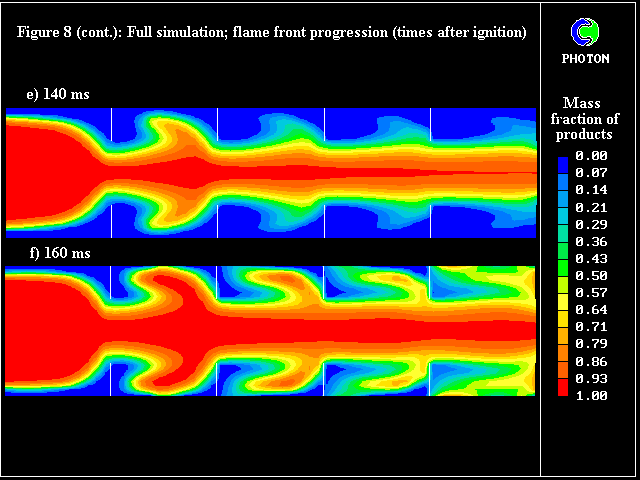
at 140 and 160 microseconds
DISCUSSION
- Although the MFTC is still (1995) in the early stages of development,
the results shown here are in reasonable agreement with the
experimental data, especially the prediction of the shape
of the flame front.
- Further work needs to be done to evaluate the best values for
the mixing rate constants, for a variety of conditions.
- The MFTC has been used within CHAM for several different
combustion scenarios, including stationary and transient flames
and large scale explosions.
wbs









